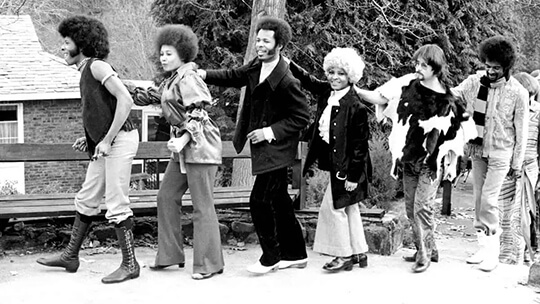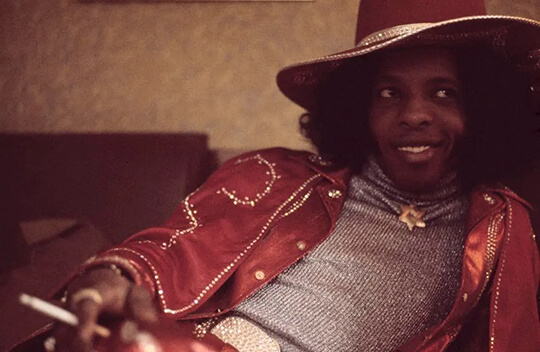

WHAT’S IT ABOUT
The life and legacy of Sly and the Family Stone, telling the story behind the rise, reign, and fade out of one of pop music’s influential artists.



MOVIESinMO REVIEW
Sly Stone reinvented music forever. Sly was originally born Sylvester Stewart, and though he was born in Texas, he was raised near San Francisco, where he developed his love for not only Black gospel music but also white rock & roll music. Those two different flavors of music helped inform Sly’s ideas and sound – he had his sound. As a child, Sly had also mastered a variety of instruments; then, prior to forming his own band, Sly even worked as a record producer. What made Sly and the Family Stone special was their groundbreaking lineup – Black and white musicians performing together, with both men and women in the group. This wasn’t common in the 1960s. The band included Sly on vocals and guitar, his sister Rose on keyboards, his brother Freddie on guitar, and friends like Cynthia Robinson on trumpet. They added white musicians Greg Errico on drums and Jerry Martini on saxophone. Larry Graham’s thumping bass completed their distinctive sound. Their music blended funk, soul, rock, and psychedelic sounds in ways nobody had heard before. Hit songs like “Dance to the Music” got everyone moving, while “Everyday People” brought different communities together during a time of racial tension. They became the voice of a generation that wanted to break down barriers. “If you’re Sly Stone, there’s no blueprint for what comes next,” one insider explains in the documentary. The group was doing something completely different without copying anyone else. Their success story is a familiar one: struggle, breakthrough, fame, excess, and eventual downfall. With increasing popularity, fame and wealth brought problems. Drugs influenced Sly, and his behavior became unpredictable. He became notorious for showing up late at concerts or not showing up at all. The documentary explores how success affected Sly without condoning his actions. It gets the facts straight about knowing the man behind the music. In interviews with family and former band members, we get to know more of the whole picture of his genius and demons. Music icons Chaka Khan, George Clinton, and Nile Rodgers are included in the film to outline Sly’s vast influence. They document how his revolutionary sound inspired later legends like Prince and Parliament-Funkadelic. The documentary contains breathtaking concert performances and TV appearances that capture the band’s uncontainable energy. Sly and the Family Stone performed at the Harlem Cultural Festival and Woodstock in 1969, proving themselves to be universally popular. They produced racially and culturally transgressive music during a period when America was volatile. The movie touches on how the Black Panthers influenced Sly to become more political, which is another nuance in his story. It also highlights his musical innovations, including being the first to use a drum machine on a hit single. The film examines what it means to be labeled a “genius” and the pressure that comes with that title, especially for Black artists. This adds depth to what could have been just another music documentary. Now 81 years old, Sly Stone is still alive to see this celebration of his work. The documentary gives him his flowers while he can still enjoy them and helps new generations understand where some of today’s music originated. At times, the film spends too much time on Sly’s personal problems and political significance rather than focusing on the music itself. The “burden of Black genius” theme occasionally feels forced. And some viewers might wish for a new interview with Sly himself, explaining what he’s doing now. All minor flaws in an otherwise compelling story. The documentary captures Sly’s spirit and reminds us why his music still matters today. As his classic hit “Everyday People” reminds us: “Sometimes I’m right, and I can be wrong, my own beliefs are in my song.” The film is at its best when it shows us the man and his music – the creative force that brought people together with new sounds. Understanding the phenomenal success of Sly Stone amid those challenges, one appreciates him as an artist who went on to be first. Rare footage and penetrating interviews tell us how the music of Sly and the Family Stone captured and defined different times: from equity struggles through the dawn of the disco era. Their music was the background to a generation learning how to dance and celebrate differences.
OUR RATING – A BURDENED 8

